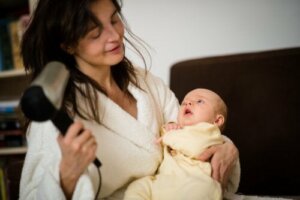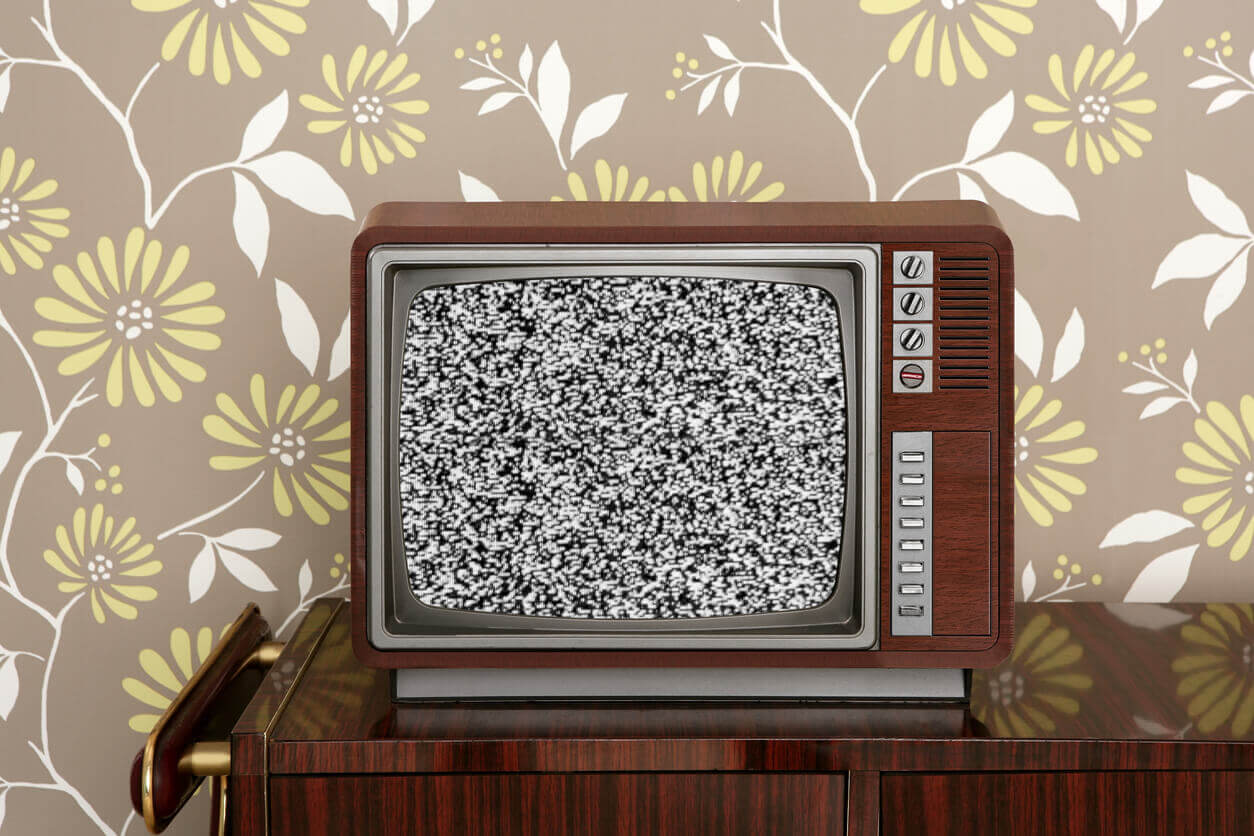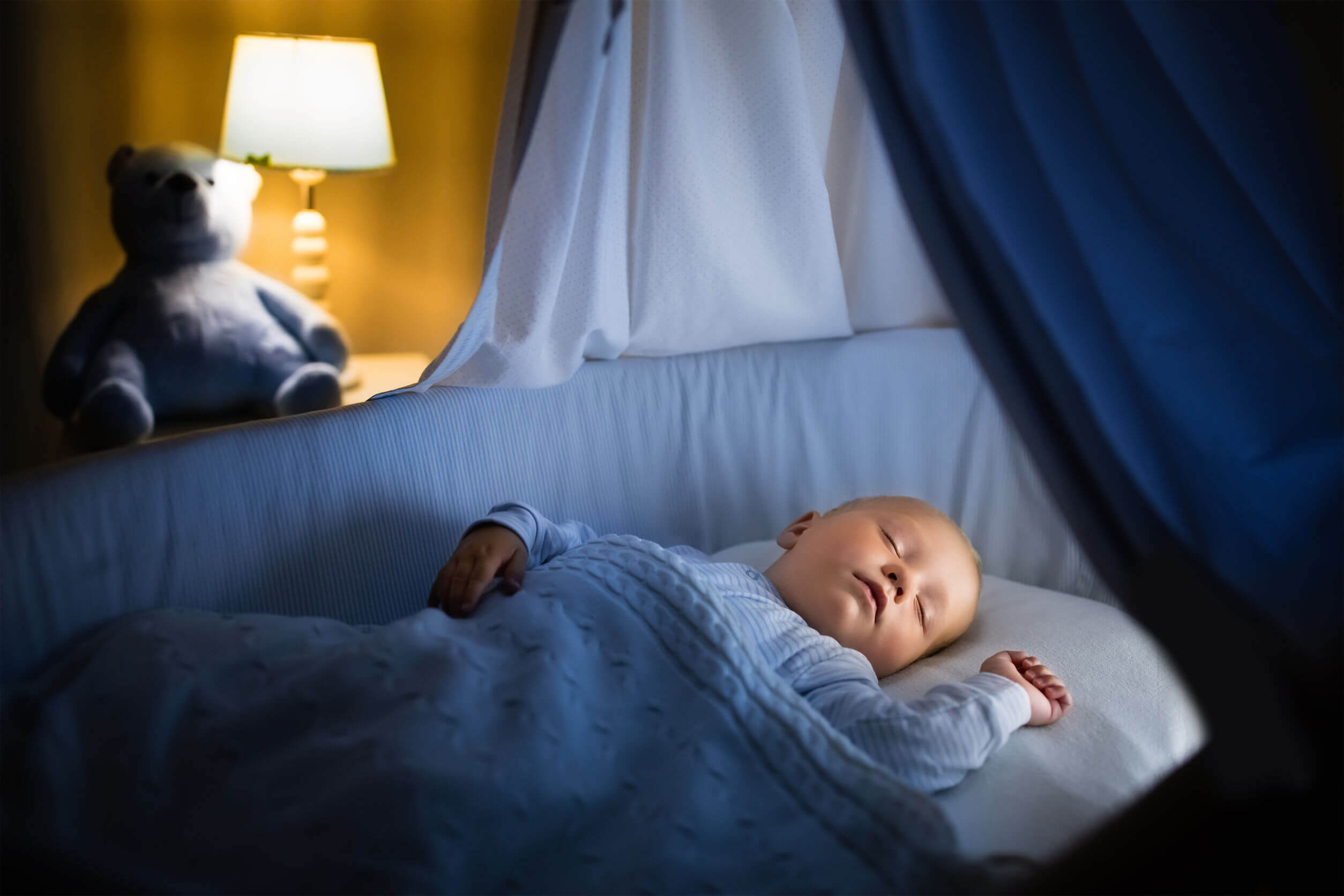White Noise for Babies: What You Need to Know

Bedtime seems to be one of the most dreaded times, not only for children but for parents as well. On top of being tired ourselves, we’re often faced with a child who doesn’t want to fall asleep, either due to difficulties in relaxing or due to a desire to continue playing. In addition to this, and depending on the age of the child, other discomforts such as colic or separation anxiety may be added. However, there are different resources to accompany little ones in order to achieve that pleasant sleep that allows a quality rest. One of them is white noise for babies, and we’ll tell you what it is about in the following article.
What is white noise?
White noise is a sound in which all frequencies are kept at the same level, without one standing out more than the other. It gets its name from the analogy with white light, which keeps all the “frequencies” of the color gamut stabilized.
Literally, it’s a monotonous sound and there are several well-known examples: The noise from the vacuum cleaner, the sound of the hairdryer, or the static that we hear when a television loses the signal.
One of the main advantages of this noise is that it tends to cancel out the rest of the sounds in the environment, which makes it easier to fall asleep or restore calm. As it’s always the same, it allows the nervous system to relax simply by reducing the amount of stimuli the child receives.
Read more: The Relationship Between Childhood Sleep and Physical and Mental Health

What is white noise for babies for?
White noise for babies and children is used to help them be calmer as a way to lower the decibels and relax. Therefore, children and adults benefit from this.
It’s also a resource widely used in babies who suffer a lot from colic, as these frequencies help them calm down.
Finally, some studies have shown that white noise is a useful element to distract babies when giving a vaccine.
Aspects to take into account when using white noise for babies
While its multiple benefits are highlighted, there are also some precautions for its use:
- Avoid daily use and don’t make this resource part of your child’s routine so that the child doesn’t depend on the presence of said stimulus in order to fall asleep.
- Don’t limit the repertoire of sounds at an early age, as children’s brains are in full development. Therefore, they need all the sensory stimuli possible in order to mature correctly.
- Maintain the appropriate volume, which is 50 decibels or less. Likewise, the source that emits the sound should be at a distance of 2 yards from the child.
As with any other resource or outside help for parenting, it’s important to follow the proper instructions to avoid misuse. White noise can be as good or as bad, depending on how we apply it.
It may interest you: Tips to Help Your Baby Sleep Better
Good rest is achieved with proper sleep hygiene

More than white noise, at bedtime, the most important thing is to make the child feel calm and safe. If they’re left alone in a room and cry themselves to exhaustion, that’s not healthy or respectful of their maturation process.
It’s important to note that white noise doesn’t replace the need to maintain a good sleep routine. That is, eat early, take a bath, change the clothes that were used during the day, put on their pajamas, respect a certain time to go to bed, and turn off all screens well in advance. Nor is white noise a replacement for parental care or the need to maintain skin-to-skin contact in order to fall to sleep.
Good rest is achieved with patience and perseverance in the inculcation of healthy habits by parents.
Bedtime seems to be one of the most dreaded times, not only for children but for parents as well. On top of being tired ourselves, we’re often faced with a child who doesn’t want to fall asleep, either due to difficulties in relaxing or due to a desire to continue playing. In addition to this, and depending on the age of the child, other discomforts such as colic or separation anxiety may be added. However, there are different resources to accompany little ones in order to achieve that pleasant sleep that allows a quality rest. One of them is white noise for babies, and we’ll tell you what it is about in the following article.
What is white noise?
White noise is a sound in which all frequencies are kept at the same level, without one standing out more than the other. It gets its name from the analogy with white light, which keeps all the “frequencies” of the color gamut stabilized.
Literally, it’s a monotonous sound and there are several well-known examples: The noise from the vacuum cleaner, the sound of the hairdryer, or the static that we hear when a television loses the signal.
One of the main advantages of this noise is that it tends to cancel out the rest of the sounds in the environment, which makes it easier to fall asleep or restore calm. As it’s always the same, it allows the nervous system to relax simply by reducing the amount of stimuli the child receives.
Read more: The Relationship Between Childhood Sleep and Physical and Mental Health

What is white noise for babies for?
White noise for babies and children is used to help them be calmer as a way to lower the decibels and relax. Therefore, children and adults benefit from this.
It’s also a resource widely used in babies who suffer a lot from colic, as these frequencies help them calm down.
Finally, some studies have shown that white noise is a useful element to distract babies when giving a vaccine.
Aspects to take into account when using white noise for babies
While its multiple benefits are highlighted, there are also some precautions for its use:
- Avoid daily use and don’t make this resource part of your child’s routine so that the child doesn’t depend on the presence of said stimulus in order to fall asleep.
- Don’t limit the repertoire of sounds at an early age, as children’s brains are in full development. Therefore, they need all the sensory stimuli possible in order to mature correctly.
- Maintain the appropriate volume, which is 50 decibels or less. Likewise, the source that emits the sound should be at a distance of 2 yards from the child.
As with any other resource or outside help for parenting, it’s important to follow the proper instructions to avoid misuse. White noise can be as good or as bad, depending on how we apply it.
It may interest you: Tips to Help Your Baby Sleep Better
Good rest is achieved with proper sleep hygiene

More than white noise, at bedtime, the most important thing is to make the child feel calm and safe. If they’re left alone in a room and cry themselves to exhaustion, that’s not healthy or respectful of their maturation process.
It’s important to note that white noise doesn’t replace the need to maintain a good sleep routine. That is, eat early, take a bath, change the clothes that were used during the day, put on their pajamas, respect a certain time to go to bed, and turn off all screens well in advance. Nor is white noise a replacement for parental care or the need to maintain skin-to-skin contact in order to fall to sleep.
Good rest is achieved with patience and perseverance in the inculcation of healthy habits by parents.
All cited sources were thoroughly reviewed by our team to ensure their quality, reliability, currency, and validity. The bibliography of this article was considered reliable and of academic or scientific accuracy.
- Erickson, L. C., & Newman, R. S. (2017). Influences of background noise on infants and children. Current Directions in Psychological Science, 26(5), 451–457. https://www.ncbi.nlm.nih.gov/pmc/articles/PMC5784839/
- Karakoç, A., Türker, F. (2014). Effects of white noise and holding on pain perception in newborns. Pain Manag Nurs, 15(4), 864-70. https://pubmed.ncbi.nlm.nih.gov/24559599/
- Hong, S. A., Kuziez, D., Das, N., Harris, D., & Brunworth, J. D. (2021). Hazardous sound outputs of white noise devices intended for infants. International Journal of Pediatric Otorhinolaryngology, 146, 110757. https://pubmed.ncbi.nlm.nih.gov/33992973/
- Othman, E., Yusoff, A. N., Mohamad, M., Abdul Manan, H., Giampietro, V., Abd Hamid, A. I., Dzulkifli, M. A., Osman, S. S., & Wan Burhanuddin, W. I. D. (2019). Low intensity white noise improves performance in auditory working memory task: An fMRI study. Heliyon, 5(9), e02444. https://www.ncbi.nlm.nih.gov/pmc/articles/PMC6819787/
- Rausch, V. H., Bauch, E. M., & Bunzeck, N. (2014). White noise improves learning by modulating activity in dopaminergic midbrain regions and right superior temporal sulcus. Journal of Cognitive Neuroscience, 26(7), 1469–1480. https://pubmed.ncbi.nlm.nih.gov/24345178/
- Riedy, S. M., Smith, M. G., Rocha, S., & Basner, M. (2021). Noise as a sleep aid: A systematic review. Sleep Medicine Reviews, 55, 101385. https://pubmed.ncbi.nlm.nih.gov/33007706/
- Sezici, E., Yigit, D. (2018). Comparison between swinging and playing of white noise among colicky babies: A paired randomised controlled trial. J Clin Nurs, 27(3-4), 593-600. https://pubmed.ncbi.nlm.nih.gov/28618052/
This text is provided for informational purposes only and does not replace consultation with a professional. If in doubt, consult your specialist.








